Yoga inspiration posts that work on facebook
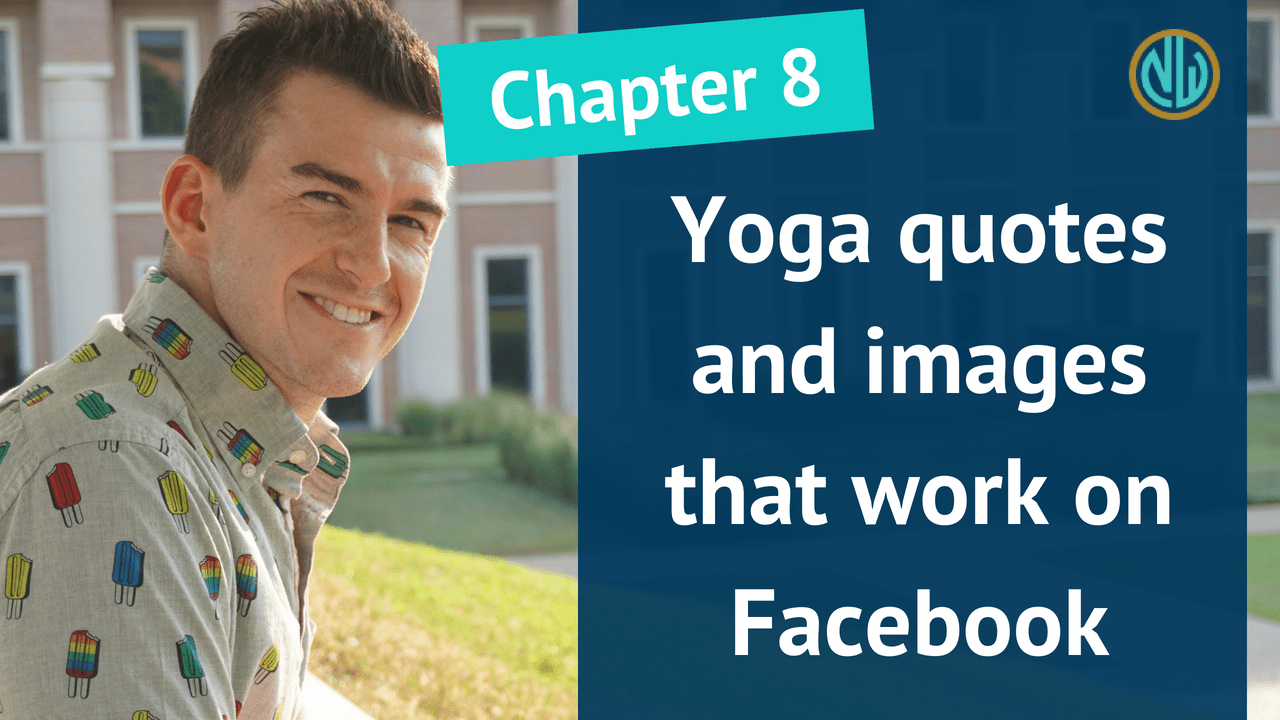
You want your yoga inspiration posts and quotes to reach the masses and be seen on Facebook.
But when you post,
- You spend wayyyyyy too long planning a post,
- You hear nothing but crickets, and
- Your ego is juiced, but your wallet remains bruised.
We’ve gone through a lot in this guide, including
- How to work the Facebook algorithm to your advantage (Chapter 1),
- Whether or not you should look into ads (Chapter 4), and
- How to get in front of the right people (Chapter 6),
But the eternal question remains: What should I post?
(This post is Chapter 8 of Yoga Advertising on Facebook: The Ultimate Guide. To see the table of contents, click here. For a PDF copy of this guide, click the button below.)
Types of yoga posts that do well on Facebook
First, let’s talk about the four types of posts you would most likely be promoting.
Remember, people usually cancel their membership or disengage because they stop paying attention or actively thinking about your product, program, or service.
Here are four engagement strategies to get you started.
#1: Personal Stories
So, why are you passionate about yoga, anyway?
If you’re just promoting your classes and sales all the time, people will start to tune you out. (You know this, because you’ve done it to tons of other people over the years.)
So instead, look for ways to share what got you into yoga in the first place.
(In copywriting, we call this your “story bank”; think about 10 to 20 compelling stories and lessons learned on your yoga journey or related to your yoga journey.)
For example – a few of mine are:
- I’ve lost 105 pounds and kept it off for 15 years; yoga helps me stay connected to my body and mind, the integration of which allowed me to achieve my transformation.
- I discovered yoga from a running injury, and when I got back to running I was even stronger – yoga helped me learn how to control my breath more effectively.
- When I first began to teach yoga, I had to shake off feelings of performance anxiety (I went to music school). Now I love teaching class, because it’s like performing music, but I can be fluid and flexible rather than strictly follow the notes on the page.
Sometimes, you can also get media or features for your personal story – here’s an example I had from Reader’s Digest:
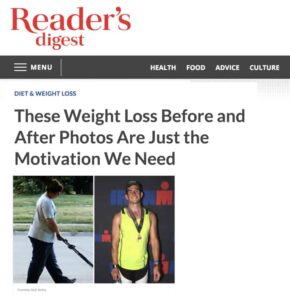
Get the idea? Try out a few of your favorites.
#2: Helpful Content
Most businesses already post here and there about helpful yoga, health, or nutrition tips. The problem though is that a lot of your followers don’t see your posts because of the Facebook algorithm.
Occasional boosted posts that feature useful tidbits are a great way to stay on members’ minds. You could boost to the people who like your page, boost to your email subscribers, or both.
One of the best fitness entrepreneurs who practices the useful tidbits approach is Jordan Syatt. His page, Syatt Fitness, has over 40,000 followers at the time this guide was written.
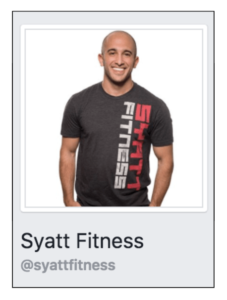
My favorite thing about Jordan is that I have never been sold ANYTHING by him in a Facebook ad. Yet I see his Facebook ads all the time.
Jordan creates helpful posts, and then boosts them to his page or his email list (I’m on both, so I can’t discern which) for visibility.
Here are a few I’ve screenshotted recently:
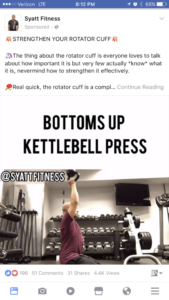


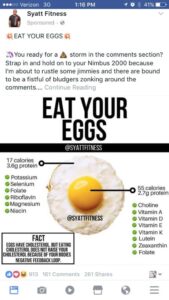
I saw all of these ads.
Jordan puts out a ton of content (as shown below), but I didn’t see a lot of these other posts because of the Facebook algorithm.
When it comes to engagement, dropping a few bucks here and there to ensure your useful tidbits reach your audience is a great idea.
#3: Earned Media or Publicity
If you get some great earned media, like a TV spot or a feature in a magazine, boosting a post to your members with that announcement is great engagement.
These are posts that you can refer back to continuously. A media placement basically says, “You are the expert,” and that you are the best in the business.
In this example, a local studio had a TV spot that turned out to be pretty humorous. (The studio owner tortured this poor guy!)
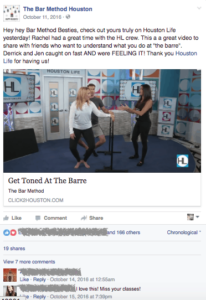
The studio repurposed this video later on and promoted it to their existing members, who LOVED it.
#4: Invitations: Your scheduled classes, specialty classes, or upcoming events
I consider a specialty class to be your existing class or service with a twist – NOT a workshop or larger intensive.
Easy examples: “Beyoncé-themed Pilates class”, “Yoga in the dark with glow sticks”, or “Grown and sexy yoga” (My friend Tamika did this one).
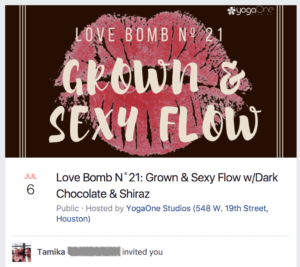
Tamika’s “Grown and Sexy Flow” class took an existing yoga class and added a dark chocolate and wine social afterward. FOMO was achieved and 75 people attended.
The advantage to a specialty class is that people are familiar with how the majority of the class will go. It’s also very easy to execute.
Remember – we want to engage existing members and give them a reason to continue membership.
You can also create a series of events at outside locations that are higher-price, but free for members.
We did this while I worked for YogaOne Studios. We created a series of events called the “Summer Sweat Soireés” to engage members throughout the summer.
If you were dropping in, the price was $30. However, the event was FREE for members.
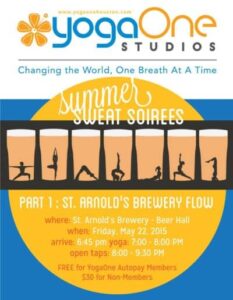
This brewery event, which featured a yoga class and two hours of open bar, pulled in 300 people.
You want the price to be high (and the event to be freaking cool) so that members can justify keeping their membership through the summer.
The anatomy of a Facebook ad
If you’ve been working through this guide and building a Facebook ad, this is the section where you’ll set up your photos, videos, and other stuff that users will see.
Open your ads tab – that’s here:
![]()
First, we determine your ad’s “identity”. (Sounds like therapy, but it just means you’re defining which page will show the ad.)
If you are running your ads on instagram, you’ll connect your Instagram integration. (You can actually run ads on Instagram without an Instagram account if you don’t have one; users will just see a name that you assign.)
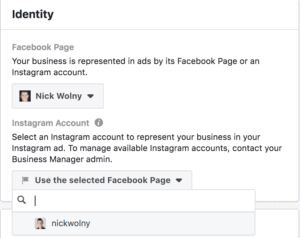
Next, you’ll choose whether to create a new ad or use an existing post. I’ll review existing post first.
With “existing post”, just click the “Enter Post ID” link, which will bring up a blank box.
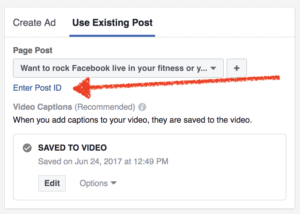
Enter the ID of your post. The “post ID” is a long number displayed at the end of a post’s URL.
You can find this URL on any post by clicking the DATE or TIME the post was published.


If you choose to create an ad, you’ll be making a brand-new post.
These are posts you would target to specific audiences and are perhaps not announcements you want everyone on your Facebook page to see.
These steps vary depending on your objective. If you have a video views objective, for example, your upload options will be to upload a video or slideshow of videos.
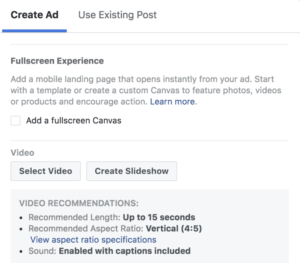
For other posts, you’ll have image options and image carousel options.
Now, if your ad has a button, a grey banner will appear below your image or video.
All in all, there are 5 sections to write information if your ad has a link: Text, Website URL, Display link, Headline, and News Feed Link Description.
Here is how each section maps to an ad. (Note that “website URL” isn’t shown in the final ad.)
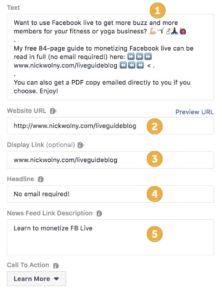
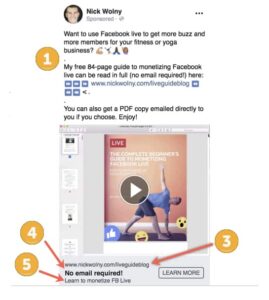
Should I use a video or an image?
I have a few notes on video.
First, as mentioned in the tutorial above, include captions on your videos. 90% of people will watch your videos with the sound off. Here are some of my stats:

Shoot your video with that in mind – assume your video will have captions, and avoid putting any important information in the bottom third of your videos.
In some of your ads, you won’t need to worry about racking up video views. Or maybe you just don’t have time to create another video. Create an image instead.
Keep in mind that with an image, your dimensions should be 1200×628, and you should have less than 20% text across the image. Otherwise the reach of your ad could be compromised.
Facebook offers an image checker, where you can quickly see if your image has under 20% text. I keep it bookmarked here.
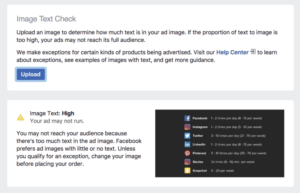
Cross check your images before you complete your ad using the image text checker.
So now you have a sense of what to post, when to post it, how to post, and how to use this massive social media vehicle to your advantage.
But how do you measure whether your efforts are paying off? To figure out how to measure your results, check out the last chapter of this guide here.

